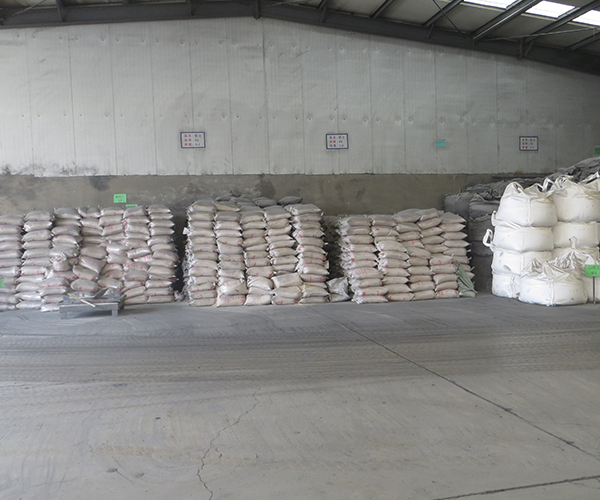Contact: Manager Qu
Phone: +86 15330915520
Contact: Manager Liu
Phone: +86 13464791403
Address: Dashiqiao City, Liaoning Province
Magnesium chromium refractory material The manufacturer of magnesia chrome brick is a refractory material mainly based on magnesia and supplemented by chromite; after magnesia is added to chrome ore and fired at a high temperature, there will be obvious changes between magnesia and chrome ore. Physical and chemical reaction, MgO in magnesia and Cr2O3 in chromite diffuse each other during the sintering process, forming point-like secondary spinel inside the periclase, and generating original spinel in the chrome ore; according to the process And the raw materials used are different, the magnesia-chrome bricks form different degrees of secondary composite spinel during the cooling process and the periclase primary and secondary spinel composites are equal, in order to achieve the formation of a direct bond between the phases, and the chromite phase is Magnesium-coated structure.
In the history of the development of magnesia-chromium refractories for the copper smelting industry, silica bricks were first used to build furnace linings. However, due to the FeO and SiO2 components in the slag composition, and the smelting atmosphere contains more SO2 acid gas, the corrosion of silica bricks The damage is very serious. From the 1950s to the 1960s, alkaline bricks have been used in the copper smelting industry. Today, after several generations of continuous improvements, the production process of magnesia-chromium refractories and the copper smelting The application in industry is becoming more and more mature. The magnesia-chromium refractory materials commonly used in the copper smelting industry are as follows:

Fused cast magnesia chrome brick is a refractory material specially designed for the copper smelting industry. The production adopts the principle of melting and casting, that is, the raw materials and additives are pretreated by mixing, crushing, pressing and other methods, and then the materials are melted into a liquid state by an electric furnace and placed in the abrasive tool. The rough billet obtained by pouring is finally processed to the magnesia chrome brick by cutting and other methods.
Fused cast magnesia chrome brick has unique advantages in resistance to slag penetration, but it is difficult to produce and expensive, and because it can be regarded as a rigid body after being integrally formed, it has less cushioning pores and micro-cracks, and thermal shock resistance Poor.
Since the 1950s, silicate-bonded magnesia-chrome bricks have been used in the copper smelting industry. With the development of copper smelting technology, silicate-bonded magnesia-chrome bricks have begun to fade out of the sight of copper smelting, but It is still used in some converters, mainly for the upper furnace, flue opening and other positions.
At present, the most widely used converters are the direct bonding of magnesia chrome bricks, the direct bonding of magnesia chrome bricks to build the furnace body, and the use of electric fusion combined with magnesia chrome bricks to build the tuyere, furnace mouth and other positions of the converter lining. .
Take the lining construction of a 150t copper converter in a factory in Inner Mongolia as an example. The cylinder and end wall lining are constructed with ordinary silicate combined with magnesia-chrome bricks, and high chromium content is used in places such as severely corroded tuyere slag lines. Combined with magnesia-chrome brick masonry, good results have been achieved.
A copper factory in Yunnan has also achieved good results by using improved fusion combined with magnesia-chrome bricks to build the tuyere, extending the furnace life and reducing the minor repair period. Generally speaking, ordinary magnesia-chrome bricks are used to build furnace linings in China, and the tuyere, slag line, furnace mouth and other positions are directly combined with bricks or electrofusion combined with magnesia-chrome bricks as the general method of copper converter lining. .
GPCarswell et al. used the rotary slag resistance test method to study the corrosion results of copper-nickel converter slag on various magnesia-chromium refractories. It can be seen that the slag resistance of magnesia-chrome bricks increases with the direct bonding according to the degree of direct bonding. The degree is reduced.
Based on the above results, it can be seen that the excellent slag resistance and certain thermal shock properties make fused cast magnesia chrome bricks have broad application prospects; in the current pyrometallurgical copper smelting process, magnesia chrome bricks are widely used for their excellent slag resistance In the whole process; the key parts in the converter blowing are generally fused and combined with magnesia-chromium or directly bonded magnesia-chrome bricks with high chromium content, and thermal shock resistance is generally used in these locations with strong thermal shock in the converter. Better direct magnesia chrome brick.
It can be seen that the cross-sectional morphology of the samples before and after the salt immersion is quite different: the fracture surface of the unsoaked sample is smooth; and the fracture surface of the sample after the salt immersion can be observed many flake attachments, which can be seen by energy spectrum analysis , Its main element is Mg, it can be known that this flake is magnesium salt. Since these magnesium salts are mainly concentrated in the pores of the sample, the pore diameter of the magnesia-chrome brick is reduced, and the porosity of the material is reduced, thereby increasing the strength of the sample after salt immersion and improving the corrosion resistance of the sample. .